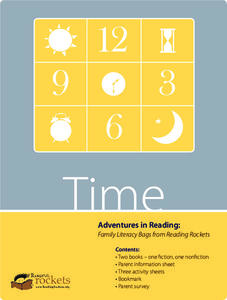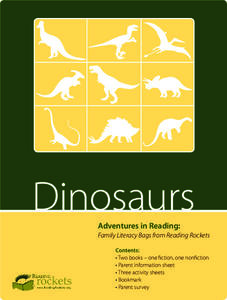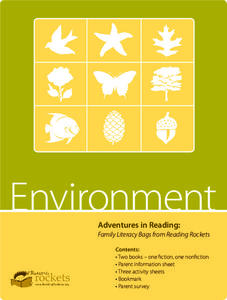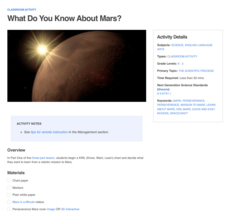PBS
Reading Adventure Pack: Oceans
Flotsam by David Wiesner and The Magic School Bus on the Ocean Floor by Joanna Cole, illustrated by Bruce Degen, begin a reading adventure pack focusing on oceans. With story listening and thoughtful discussion, scholars complete several...
GLOBE Program
Observing Visibility and Sky Color
What does a beautiful sunset have to do with the atmosphere? An inquiry-based lesson has learners make observations about the visibility and color of the sky during different time periods. They then relate their observations to...
GLOBE Program
Making a Sundial
Sundials are more than just primitive clocks. Learners build their own sundials to study the location of the sun across the sky throughout the day. They use shadow evidence related to their sundials to make conclusions about solar movement.
NASA
Feel the Noise
Can you hear it now? Young scientists experiment with sound waves using metal objects and string. They strike metal objects while they hold them and as the objects hang from a string to compare the sound. They discover that sound travels...
PBS
Reading Adventure Pack: Rocks
A Reading Adventure Pack focuses on rocks. Scholars participate in three activities after reading a fiction and nonfiction text—The Jade Stone, a Chinese folktale adapted by Caryn Yacowitz, and Rocks in His Head by Carol Otis Hurst....
PBS
Reading Adventure Pack: Folktales
Following a reading and thorough discussion of books—Anansi the Spider: A Tale from the Ashanti by Gerald McDermott and The Moon Book by Gail Gibbons—scholars complete three activities. First, they use playdough or cookie dough to create...
PBS
Reading Adventure Pack: Time
An activity packet explores the concept of time. First, scholars read two stories—The Very Grouchy Ladybug by Eric Carle and Telling Time: How to Tell Time on Digital and Analog Clocks! by Jules Older, illustrated by Megan Halsey....
NASA
Art and the Cosmic Connection
Solar art inspires! Scholars study planetary geology with an artistic analysis. Pupils view a PowerPoint presentation on the solar system and space exploration and then try their hand at planetary image analysis using art techniques.
PBS
Reading Adventure Pack: Dinosaurs
Two books—Dinosaurs by Gail Gibbons and Danny and the Dinosaur by Syd Hof—begin a learning experience in which scholars complete three creative, imaginative, and real-world activities. First, pupils create a puzzle featuring their...
PBS
Reading Adventure Pack: Environment
A fiction and nonfiction text, The Great Kapok Tree: A Tale of the Amazon Rain Forest by Lynne Cherry and I See a Kookaburra! Discovering Animal Habitats Around the World by Steve Jenkins and Robin Page begins a learning experience in...
NASA
What Tools Would You Take to Mars?
Having the right tool for the job is a must. Young space explorers design their own missions to Mars by deciding what they would like to learn about the planet. At the end, they draw and write about the tools they need to accomplish...
NASA
Parachute Design
Bring the science of space exploration to the classroom. Young learners explore the mechanics of the parachute-landing mechanisms on the Mars Rover. They design and build their own parachute models and test their ability to land a probe...
NASA
What Do You Know About Mars?
Learn exciting facts about Earth's neighboring planet—Mars! Young scientists collaborate on a KWL chart about Mars, adding information as the activity progresses. Scholars listen while teachers read an article about Mars and watch...
NASA
The Types of Clouds and What They Mean
Learn to forecast the weather using cloud types. Budding meteorologists identify cloud types and learn to use a dichotomous key. As scholars develop observation and identification skills, they discover how different cloud types cause...
NASA
Whip Up a Moon-Like Crater
The moon is famous for its craters, but they haven't always been there. Young learners experiment with materials to simulate the creation of moon craters. Pupils are able to see patterns in their materials that are similar to the...
Smithsonian Institution
How Would You Design a Lighthouse?
Guide the way to a better understanding of lighthouses. Young scholars first read a story about lighthouse and consider the problem that lighthouses try to solve. They then identify parts of a lighthouse and draw daymark patterns. As a...
DocsTeach
Sequencing from Seeds to Harvest
Explore the farm to table experience in a fast-paced lesson on gardening. The activity uses image sequencing to help young scholars understand the process of growing food from seed to harvest. Academics also participate in group...
American Chemical Society
Heat Up and Cool Down
Don't be so dense! Using food coloring, pupils conduct two experiments with the difference in densities of hot and cold water. In the first experiment, learners add dyed hot and cold water into room temperature water and observe how the...
American Chemical Society
The Fate of Calcium Carbonate
Soften up an egg. Learners use vinegar to test for calcium carbonate in an egg shell and an antacid tablet and compare the reaction with vinegar to the reaction with water. In a second experiment, class members break down an egg shell...
American Chemical Society
Chromatography - Color Clues
Here's an activity that will change how one sees color. Pupils try out an experiment on chromatography where they place a drop of food coloring on a coffee filter, add several drops of water, and watch the colors spread and separate....
American Chemical Society
Chemistry Color Changers
Knowledge of acids and bases doesn't need to be a secret. Learners use red cabbage to create an indicator solution, then test how adding lemon juice (acid) and detergent (base) changes the color of the solution. They then use the concept...
American Chemical Society
Chemistry and Comics
Copying the comics couldn't be easier. A fun and simple activity has young scientists rub the back of a comic strip with a spoon to see if the ink will transfer to a white sheet of paper. They then repeat the experiment, rubbing...
American Chemical Society
Aware of the Air
It's there, even though no one can see it. Scholars create two different-sized parachutes out of shopping bags, then let them fall through the air. They should see that the larger parachute falls more slowly and interpret this to mean...
American Chemical Society
All Wet
Sometimes liquids just don't get along together. A fun experiment has scholars determine whether various liquids dissolve in water. They pour isopropyl alcohol, vegetable oil, and corn syrup into cups of water to see which ones mix well...

























